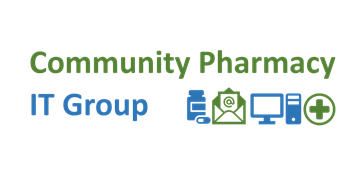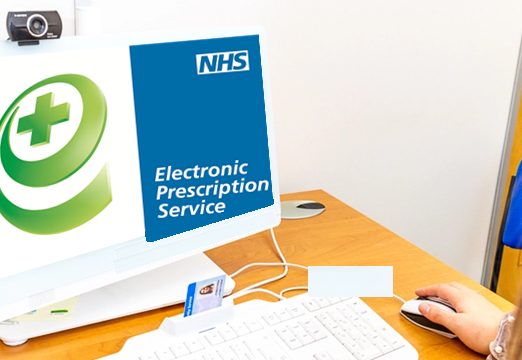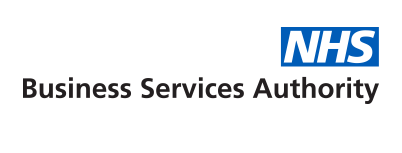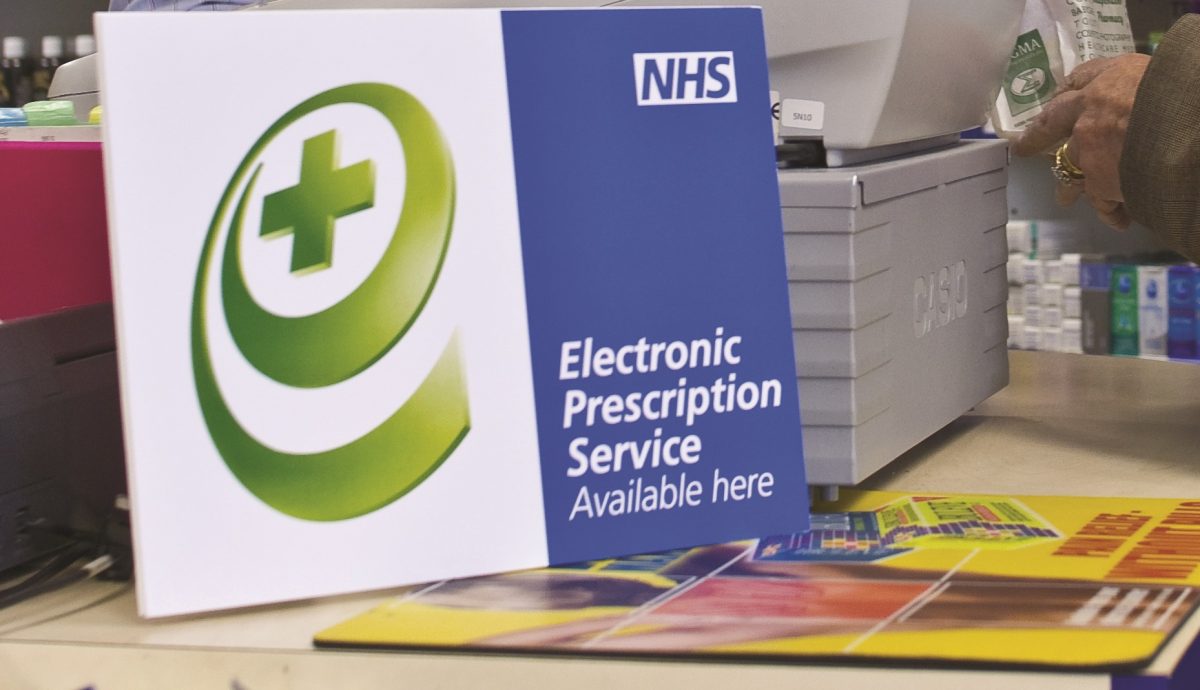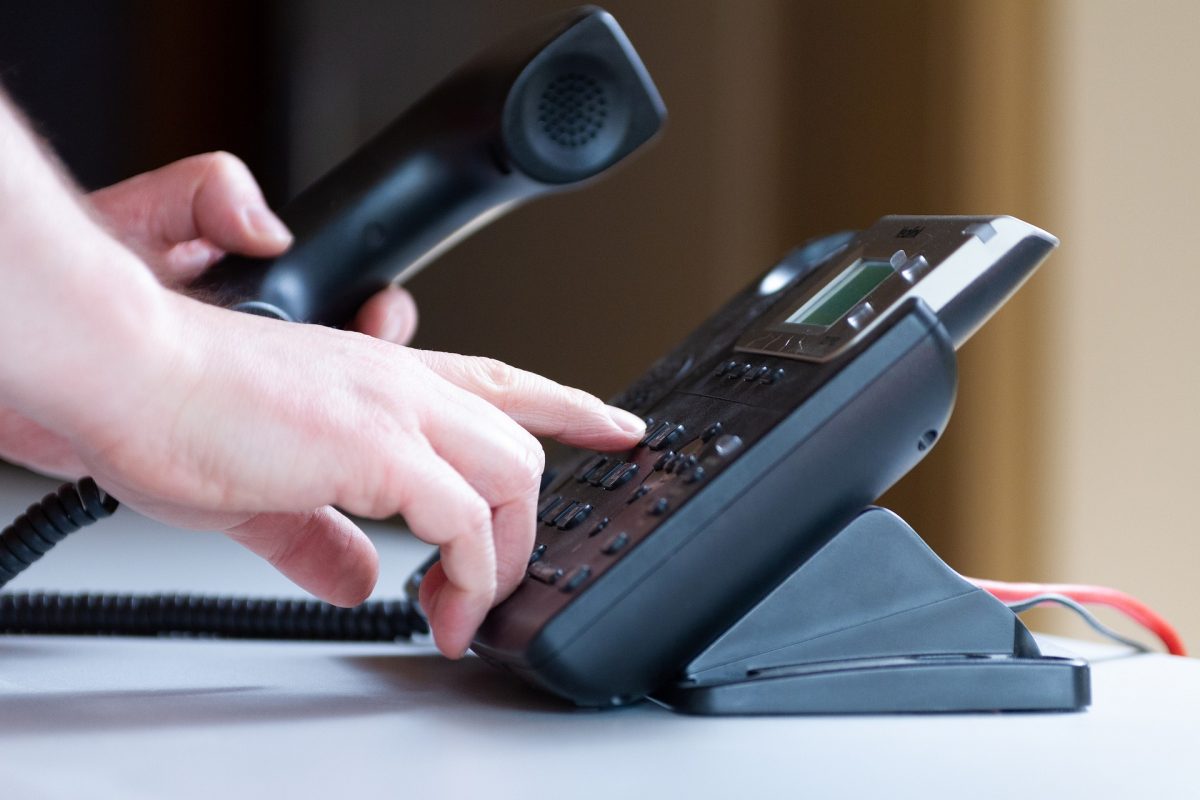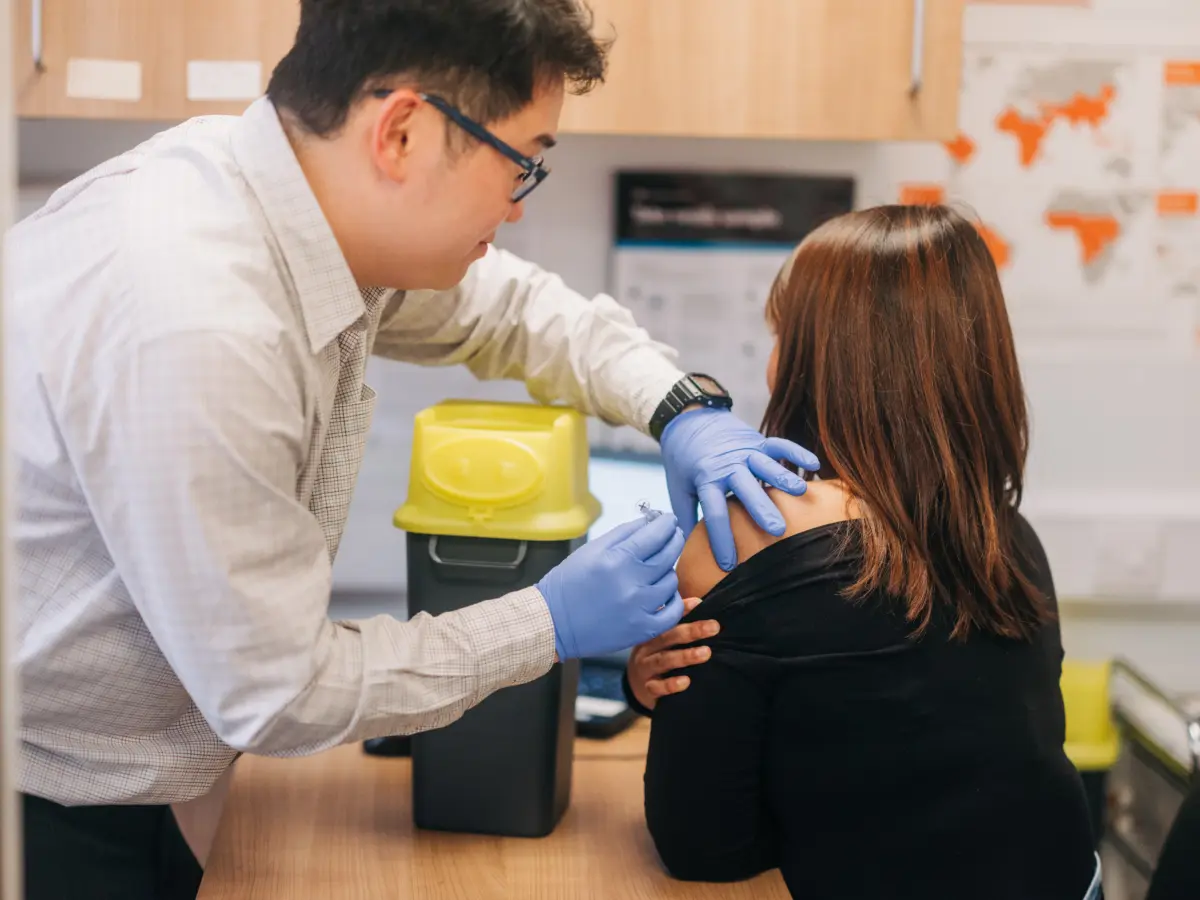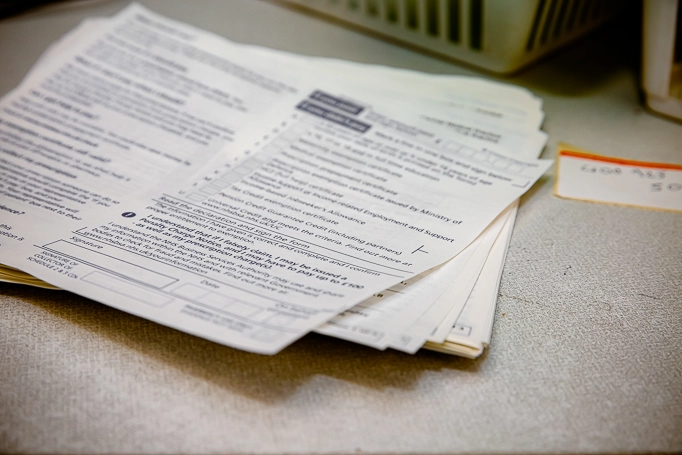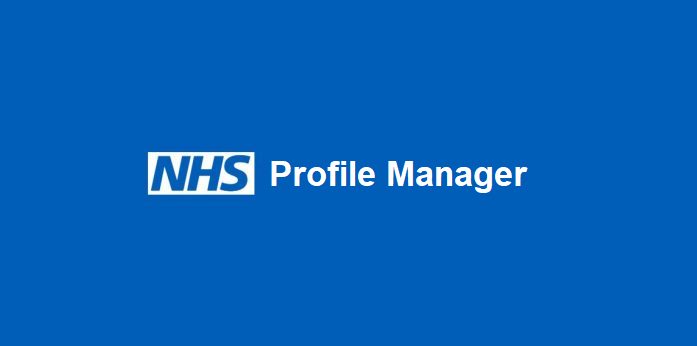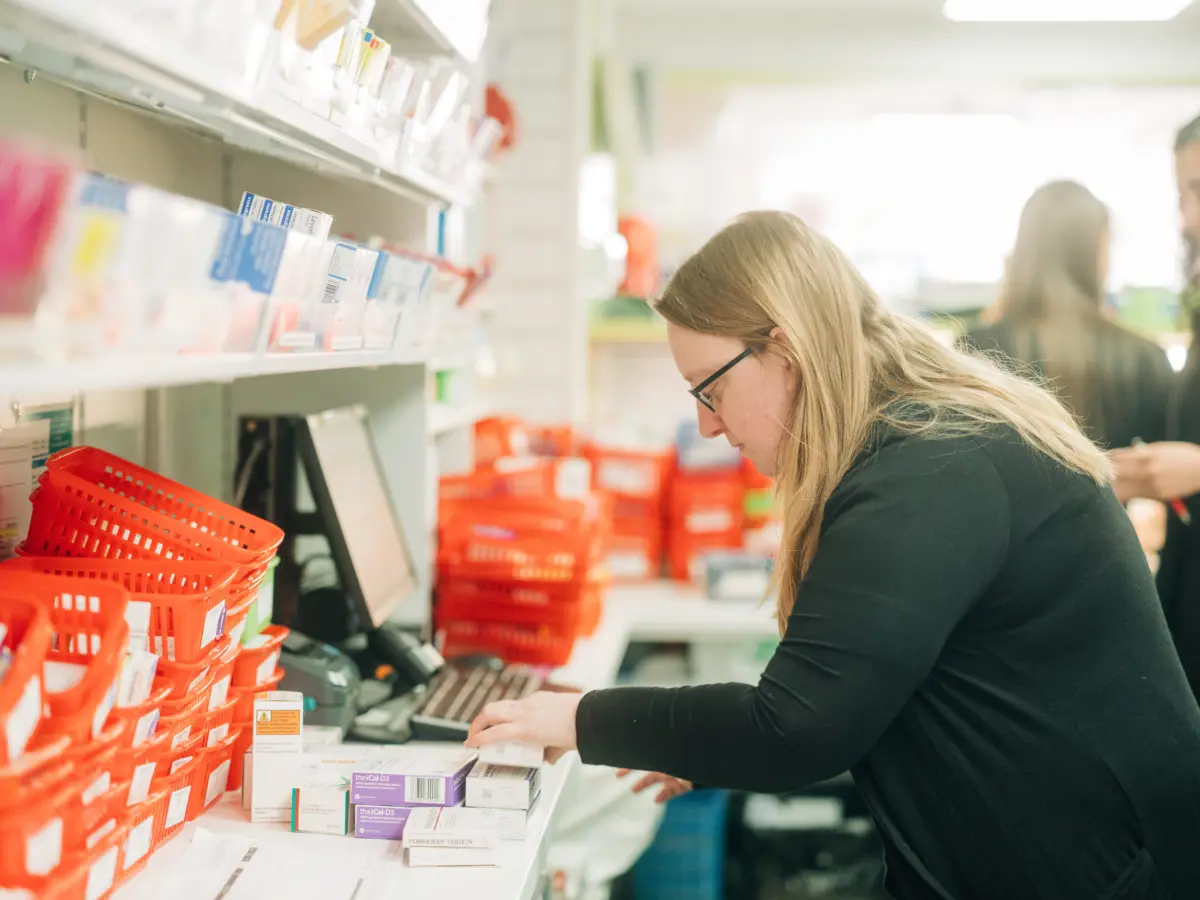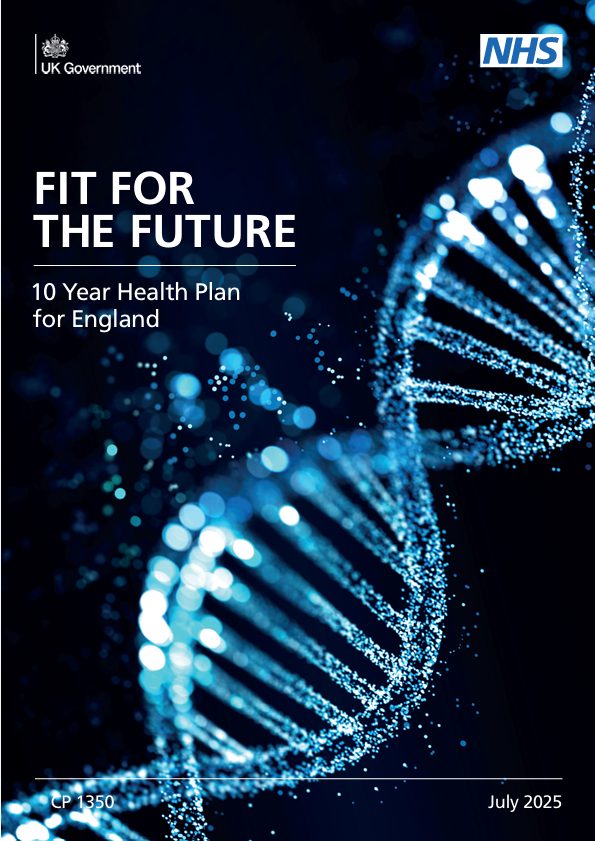Tokens (EPS)
Published on: 12th August 2014 | Updated on: 7th March 2023
Paper copies that are printed to accompany electronic (EPS) prescriptions are known as ‘tokens’. The barcode on the tokens can be scanned to retrieve the electronic prescription from the central NHS Spine.
Community Pharmacy England’s factsheet: Summary of EPS-related forms and tokens explains how to recognise the different types.
Ordering tokens: This is usually done on the PCSE pharmacy stationery and EPS token online ordering portal. Read more in the section immediately below.
Primary Care Support England (PCSE) deliver various stationery for community pharmacies – including EPS tokens.
How to order?
The PCSE pharmacy stationery online ordering portal should be used in most cases by pharmacy teams requesting EPS tokens. The same portal is also used for ordering some other supplies.
Continuity tip: There is always one shared account per pharmacy, with multiple persons that can be linked to it. Multiple users should be linked to the account for continuity purposes (in case of unexpected absence).
Signing up for the ordering portal: You can register for a new account to order tokens by using the PCSE “contact us” form and the ‘Register for PCSE online’ drop-down options twice within both the fields ‘enquiry category’ and ‘enquiry type’. A forgotten password process is available.
Portal updates and use: Checking the portal will help you to be aware of delivery statuses and any delivery problems may also be flagged via in-portal messages. The portal is for use with desktops and laptops and is not optimised for smart device usage.
An escalation process is set out further below if required.
Escalation process
Escalation steps are set out within the : EPS token ordering and escalation factsheet or are also set out below:
If you have used the online portal but have had problems obtaining tokens that you need, then the escalation process should be followed:
- Make contact to PCSE in writing: (using their “contact us” form) and emailing yourself a record of what is sent. In some scenarios pcse.urgentsupplies@nhs.net may alternatively be contacted in relation to an order placed via the portal not yet delivered. Ensure that your email to PCSE includes delivery references, your ODS code, your contact information, and that you have explained date when you expect to run out of tokens.
- Optionally, call PCSE about your written request (0333 014 2884).
- Email PCSE further (on a daily basis) if you have any difficulties with EPS token slow delivery, or difficulties in registering for the online portal, or other ordering issues etc. Most contractors have a typical delivery day each week. In an emergency there is an option to call PCSE (0333 014 2884) in reference to your written communication.
- Check your email junk folders if you are awaiting an email.
- Email PCSE further (on a daily basis). Keep a record of your emails. If you are emailing pcse.urgentsupplies@nhs.net then try to continue the email chain so that each email carries a record of the previous correspondence to and from PCSE.
- Send your PCSE email correspondence to Community Pharmacy England: If no response has been received within 3 working days (as stated on the PCSE website) then this would be unusual, however, from this stage, please send your emails (or contact PCSE and cc Community Pharmacy England) to it@cpe.org.uk and comms.team@cpe.org.uk and also explain within your email the steps you have taken, and the current position e.g. “I have a supply of EPS tokens to last me for the next two days” so that Community Pharmacy England is able to advise you or escalate matters. The email must include delivery references and your ODS code.
- Contingencies if tokens will run out: If required, refer to the token ‘Contingency & tips’ section of this webpage which explains those actions if you need token supplies but will not get these within time.
Supply issues
PCSE may add ‘supply issue notes’ to the ordering portal about EPS token supply issues if there are some future EPS token supply issues.
Contractors should escalate token supply related issues by following the escalation process (set out in the section immediately above) if the token supply is low or there remains an unresolved order.
About the quantities which can be ordered at the same time
The PCSE online ordering portal may at times enable ability to order:
- up to four boxes of 2,000 EPS tokens (totalling 8,000 tokens); and
- once within each 7-day period.
This volume of 8,000 tokens per week, was considered adequate for most pharmacies. These maximum order settings were put in place to:
- allow back-up stock;
- ensure continuous supply overall; and
- reduce any risk that any excessive future stockpiling would impact continued supply nationally.
Busy pharmacies which process very high volumes can order more. Alternatively, extra tokens can also obtained using the escalation process set out above (e.g. use of pcse.urgentsupplies@nhs.net). PCSE may adjust the max token ordering limit as needed to manage appropriate supply.
There are two types of token: (1) the prescription token and (2) the dispensing token.
Both types are simply paper copies of the prescription details contained within the electronic prescription and neither can be used to dispense prescription items without the corresponding electronic prescription.
 |
Prescription Tokens (issued by GP) |
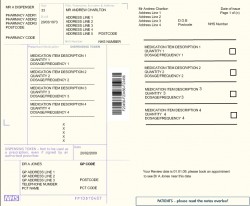 |
Dispensing Tokens (issued by dispenser) |
Read more at: Summary of EPS-related forms and tokens (factsheet)
Tokens that require printing
There are two types of dispensing tokens which require printing:
-
Where token to be taken to another pharmacy (e.g. out of stock): Where a prescription has been sent to a patient’s nominated pharmacy but that pharmacy is unable to fulfil the order, for example because they are out of stock of an item, if the patient wishes to go to another pharmacy, the electronic prescription would have to be released back to the Spine by the nominated pharmacy and a dispensing token printed so that the patient can access the electronic prescription at another Release 2 enabled pharmacy. In the same way as with paper prescriptions, all items on the prescription would have to be returned to the spine in this scenario so that they can be accessed by another pharmacy, not just the out of stock item.
-
‘Paid’ patients / Exemption declaration made (unless exempt because of age or the Real Time Exemption (RTEC) system): This occurs when the patient is required to make an exemption declaration or declares they have paid the patient prescription charge. Patients are not required to make an exemption declaration if the patient’s date of birth is contained within the electronic prescription, or if the RTEC system determined exemption onto the EPS prescription. If the patient has been given a prescription token by the prescriber, this can be used to collect the exemption declaration (see also EPS Phase 4 tips).
Optional printing
Dispensing tokens may also be printed in other scenarios, for example if this is requested by the patient or to support the communication of supplementary clinical information to the patient. Tokens contain patient identifiable information so care should be taken in how they are disposed of.
Local NHS England and NHS Improvement teams are responsible for providing community pharmacies with Form FP10DT, free of charge, to use to print the token. This form is white in colour and is in the same style as other NHS prescriptions. As the dispensing token will not be signed by a prescriber, it is not a legal prescription and therefore Form FP10DT does not need to be stored securely. It will be important for LPCs to discuss local arrangements for the distribution of the forms with local NHS England and NHS Improvement teams to ensure that arrangements are efficient and manageable.
Read more within the ‘Dispensing tokens FAQs’ within the FAQs section of this webpage.
Read more about submitting tokens to NHSBSA within that section of this webpage.
Prescription tokens are printed on prescription form FP10SS by the prescriber. Standard text will be printed automatically in the signature box to prevent the prescriber from signing the prescription token.
Prescription tokens will be issued in different situations depending on the stage of rollout of Release 2. For the time being, electronic NHS prescriptions can only be issued:
- where they are being sent to a patient’s nominated pharmacy; and
- by GP practices piloting Phase 4.
Required to be issued by GP
Q. Which tokens are prescribers required to print prescription tokens?
A. They are required to provide a token to the patient it is a Phase 4 prescription.
Issued by GP
Phase 4 prescription tokens
GP practices piloting Phase 4 will issue EPS Phase 4 prescription tokens.
See also: Factsheet: Phase 4 token vs Paper prescription comparison factsheet.
At present the NHS Digital token specification deals with paper token standards.
Non-Phase 4 prescription tokens
Prescribers have the option to provide a token to the patient where they have nominated a dispensing site, for example where the patient requests a copy of the prescribed information or if the prescriber believes it is helpful to provide this to the patient for example to signal the end of a consultation.
Where an electronic prescription is being sent to a patient’s nominated dispensing contractor and the prescriber chooses to give the patient a prescription token, the right hand side of the token will include the name and address of the patient’s nominated dispensing contractor. This will help to ensure that the patient always knows who they have nominated.
If the patient brings their prescription token to their nominated pharmacy, the barcode can be scanned to ‘pull down’ the electronic prescription, supporting efficient processes within the pharmacy. If the patient goes to a pharmacy other than their nominated pharmacy, if the prescription has not already been pulled down to their nominated pharmacy’s local system, the prescription can still be accessed.
Top tips
- Order well in advance: It is best to order well in advance.
- Ensure several persons can do ordering: There is always one shared account per pharmacy, with multiple persons that can be linked to it. Multiple users canbe linked to the account for continuity purposes (in case of unexpected absence).
Contingency planning
PCSE distribute EPS tokens and there is an escalation process (see ‘Ordering’ section of this webpage). The expected process is that tokens must be printed onto official token paper stationery.
Preventing printer problems: A broken printer or running out of toner can create significant operational problems within pharmacies. It is important that pharmacies consider this in business continuity planning to minimise the risk of this occurring.
If you need to collect an exemption declaration but there are longstanding problems preventing dispensing tokens being printed or received, some pharmacies may be considering a number of options as a very last resort:
- Borrow tokens
- Handwrite a token: Some pharmacy staff may have handwritten the dispensing token and used this to capture the exemption declaration. It is important to ensure that as a minimum, the patient’s name and the prescription ID number are written on the form. There is no need to write the product information or prescriber details.
- Recording the information in another way (e.g. book): Another option is pharmacy staff have used is to record the patient’s exemption details, for example get the patient to write a note in a bound book with the name, date, prescription ID and their exemption details and then once the pharmacy is in a position to print tokens again, pharmacy staff complete the reverse of the token as the patient’s agent. The pharmacist would need to be sure that the patient understands that he has authorised the pharmacist to sign as his ‘agent’. However, this option is not recommended by NHS Protect and Community Pharmacy England for a number of reasons. Primarily because the pharmacist is involved in the transaction, insofar as they benefit financially from the dispensing of the prescription, and to help avoid any potential discrepancies between the patient and the pharmacist regarding exemption status. It should be noted, any liabilities incurred by acting as an “agent” are in fact liabilities of the patient and not the pharmacist acting as the agent. Therefore all liabilities for penalties will always be that of the patient. Unfortunately, Community Pharmacy England has been informed of cases where pharmacists or their staff have erroneously signed prescriptions on behalf of patients, where the patient was not present in the pharmacy at the time of dispensing, and the patients have received letters from the Counter Fraud officials seeking repayment where the patient was in fact not entitled to exemption from charges. To avoid any confusion between the pharmacist and patient, the signing of the exemption claim is therefore not recommended, unless the pharmacist or his staff see the proof of entitlement to exemption.
Jamming issues
Since 2015, Xerox replaced 3M as the supplier of EPS tokens to the NHS. PCSE distribute EPS tokens but are not responsible for their manufacture.
If pharmacy teams experience increased levels of printer-jamming they could contact the Xerox helpdesk on 0300 123 0849 or via email nhsorders@xerox.com for support and assistance. Where pharmacy contractors continue to experience problems with printer jamming, they may also wish to contact their IT supplier to ensure that their printer settings are configured optimally for printing EPS tokens.
Top tips to reduce risk of jamming:
- Avoid excessive printing without a break: This may overheat the printer and reduces its lifespan. Consider printing in batches to allow cool-down periods. Refer to your manufacturer guidance for further information.
- Can printing be reduced: Some pharmacies report that the decision to introduce extra terminals allowed for SOPs to be refined so that there was less printing and therefore the usage of toner and printer replacements was reduced. A further consequence was a lower risk of printer jamming. The only tokens which are required to be sent to the Pricing Authority are those relating to paid prescriptions, and those which relate to prescriptions exempt for a reason other than age.
- Use thin paper setting: We have been advised thin paper, and lower fuse temperatures settings can be made available for those using Brother printers (updated firmware may be needed). Whichever printer is being used, a thin printer setting may be preferable to avoid the risk of jamming. Whether you have a single input tray in your printer’s driver or many input trays, tell the printer what kind of paper you have in the tray: Most printer controls include a section or drop-down list where you can pick a paper by name, type, thickness, or other quality. If you aren’t sure whether your printer takes a certain kind of paper, check its documentation.
- Avoid mixing paper types: Use only one kind of paper at a time in your input tray.
- Pay attention to the tray’s needs when you are reloading your input tray, tray’s needs, such as how the paper should be loaded and whether the length or width guides need adjusting.
Specifications are included at cpe.org.uk/specs including:
- Dispensing token spec (relates to paper only at present)
- Prescribing token spec (relates to paper only at present)
Community Pharmacy IT Group (CP ITG)’s updated Views on the next generation of EPS had set out priority items for exploration including: “Enable paperless prescription processing (digital tokens developed and suitable guidance and standards in place) (EPS Phase 4 prescriptions and NHS Digital token specification [2008] updated to specify digital token requirements).”
Digital token future standards
Some GP practice apps might display barcodes and IDs but may do so without those digital tokens having been formally approved by NHS Digital, given that the current Token specs outline paper requirements.
CP ITG is keen to hear views about Phase 4 digital tokens, and other prescribing / dispensing digital tokens. Contact it@cpe.org.uk if you’d like to submit views about future token standards – e.g. for items which NHS Digital could consider adding to the future Digital token specifications.
Patients can now view EPS information within the NHS App (new)
See: NHS App and the section about ‘EPS information within the NHS App’.
Currently, digital EPS prescription tokens will only appear within the NHS App.
The testing and rollout of this functionality will help inform further work on IT standards for digital token. NHS England anticipates that over time, other app developers aligned to NHS IT standards will be able to offer the same functionality.
More information on the digital EPS prescription token can also be found at this link.
Standard arrangements
Your monthly bundle submitted to the NHSBSA for pricing will include certain prescribing/dispensing EPS tokens.
Which tokens should I send with the prescription bundle?
Community Pharmacy England’s position is that the EPS tokens which should be sent to the NHSBSA are those used:
- to capture the exemption signature (other than prescriptions exempt because of age or the RTEC system);
- because the patient has paid a prescription charge; or
- to make a claim using the Serious Shortage Protocols (SSPs) (EPS token claiming method).
Such tokens are sent for audit purposes only, because pricing is normally made against the electronically submitted EPS message and the exemption category applied to the electronic prescription.
EPS CD tokens and submission
Community Pharmacy England has prepared some FAQs on this topic to assist pharmacy teams updating their EPS token submission procedures. We have discussed these points with both NHSBSA and NHS Digital.
Past arrangements
Previously COVID-19 pandemic arrangements meant that token submission requirements were temporarily suspended.
Community Pharmacy England FAQs: CD token submission
Q. Do I need to record the person collecting a CD onto the EPS token?
No, there is not a requirement to do this. However, there is current good practice guidance from the RPS for the person collecting the CD prescription “to sign the space on the reverse of the prescription form”, and using the EPS token is one method of being able to do this. Another method is to make an electronic record – such as a record within your PMR system. Other organisations may produce guidance that aligns with this RPS good practice.
Q. What is the purpose of capturing a collector’s signature for Schedule 2 and 3 CDs (e.g. onto a token or onto the PMR system)?
Pharmacy teams reported to us that the record of the person collecting the CD could be used if a patient or their representative queried the team about whether CD supply had been provided (such queries may occur after the pharmacy has recorded that supply has already been made). An EPS token used to capture information about who collected the CD can’t be used for that purpose if it has been posted to NHSBSA.
Q. Which EPS CD tokens (if person collecting CD recorded) must be submitted?
The ‘Which tokens should I send with the prescription bundle?’ section above explains all those tokens that must be sent to the NHSBSA i.e. only those where exempt for a reason other than age, or ‘paid’.
There is no requirement for pharmacy teams to send age exempt EPS tokens for Schedule 2 and 3 CDs to NHSBSA for the reasoning CD collector information was captured. The presence of information on the person collecting the CD onto an EPS token is not a reason that such tokens must be sent to NHSBSA.
Some pharmacy teams may choose to submit tokens other than those required to NHSBSA whereas other teams may prefer not to submit age exempt CD tokens e.g. so they can be used in the event of query relating to the scenario outlined in question 2 above.
Key points on sending tokens to the Pricing Authority
- Timing: Tokens should be submitted in the same dispensing month as the corresponding electronic prescriptions were electronically submitted.
- Tick Box: Tick the ‘ETP Token for non-payment’ box on the FP34C submission document when submitting tokens.
- Sort tokens at top, separate from groups: tokens should be secured separately, at the top of the relevant groups (i.e. exempt or chargeable) along with the monthly submission of FP10 prescription forms.
- Prescriber order? There is no requirement for sorting tokens into prescriber order.
EPS Release 1 prescriptions do not need to be secured separately from other FP10 prescriptions as these are scanned for reimbursement purposes.
Tokens which do not need sending
Contractors are not required to keep those tokens which do not need to be sent to the NHSBSA. These can be disposed of in line with data protection laws and the pharmacy team’s processes.
Related resources
NHSBSA guide: Submitting EPS tokens
Disposing tokens
Contractors are not required to keep those tokens which do not need to be sent to the Pricing Authority. These can therefore be disposed of in accordance with the Data Protection Act and the pharmacy team’s processes. Read more about general Data Security and information governance.
Supplies, ordering and escalation
Q. How long will it take to get a PCSE online ordering portal account for a new pharmacy?
This will take a number of working days and therefore it is recommended to set-up an account well before it will be needed. See also: the ODS change checklist which mentions need to access the ordering portal.
Prescription token FAQs
Q. The prescriber has signed the token; does this make it a legal NHS prescription?
No. If the prescriber has signed the prescription token, it cannot be treated as a legal NHS prescription as the form is not approved for this use by the NHS. A contractor would be reimbursed for dispensing against the electronic prescription, not the token. To minimise the risk of a prescriber signing the token, the signature box on the token will be over-written by the prescribing system to state that the token should not be used as a prescription.
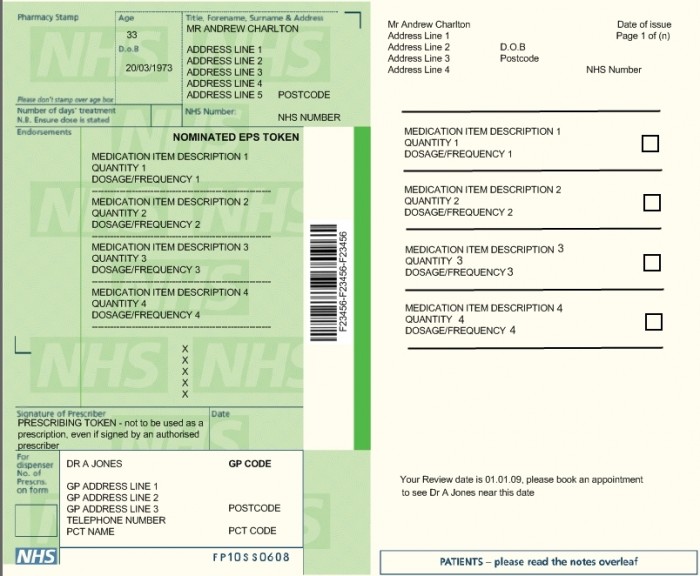
Dispensing token FAQs
Q. What is the pharmacy cost of EPS tokens?
Local NHS England and NHS Improvement teams are responsible for providing community pharmacies with Form FP10DT, free of charge, to use to print the token. the printing onto tokens causes ink, toner, and printer replacement costs.
At present various EPS tokens are still required to be submitted to NHSBSA – as outlined on this webpage. Community Pharmacy IT Group and Community Pharmacy England support changes which enable less need to have to use paper for EPS and pricing processes.
Note: The PCSE ordering portal may display valuations of paper token but these do not apply to pharmacy contractors, and the portal has included some text advising that contractors are not charged.
Q. Am I required to submit EPS tokens to NHSBSA which relate only to items which are free-of-charge (FOC) items?
The new prescription form introduced from early 2020 does not enable patients to tick a box to confirm the ‘free-of-charge’ status (e.g. contraceptives or appropriately FS-endorsed items). Patients can but are not required to tick box X or sign for any contraceptives ordered on the older version of the prescription/token form (version 0515 – which is being phased out during 2020). Accordingly, there is no longer a requirement to include any Tokens with FOC items along with other Tokens normally submitted to the NHSBSA at the end of the month. If, however, the prescription contains other items for which a charge should normally be levied, the prescription should be processed as either charge paid, or the appropriate exemption category should be selected (and where required, any corresponding Tokens should be submitted to the NHSBSA accordingly).
Q. Can dispensing tokens be reprinted?
Yes. Dispensing tokens can be re-printed, for example if there was a problem with the printer whilst printing the initial copy. The re-print will be an exact copy of the original. Some system suppliers may: mark the print-out as a duplicate; and warn you if you print a token which has been printed at the pharmacy in the past.
Q. Will I need a specific printer for printing tokens?
Your pharmacy system supplier will be able to provide guidance on hardware requirements. As a minimum a 600dpi mono laser printer is required. This must be able to handle the size and weight of the prescription token stationery. Dual bin printers are recommended.
Q. My NHS England Area Team has provided me with dispensing tokens. The form is coded FP10DT0407. I’ve noticed that Box H states ‘gets income support (IS)’ whereas the normal FP10s state ‘gets income support (IS) or income related employment and support allowance (ESA)’. How should a person claiming income related employment and support allowance’ (ESA) complete the back of the FP10DT0407 form?
The FP10DT0407 dispensing tokens were originally produced in 2007 and the reverse of the form was correct at that time. A new form was developed in June 2008 (FP10DT0608) to reflect changed to the exemption arrangements.
The old version of the dispensing token will remain in circulation until the forms are used up. People who are included in an award of income-related Employment and Support Allowance and who need to complete an exemption declaration on an old form should tick box H “*gets Income Support” to claim free prescriptions.
Q. My pharmacy system is configured to automatically print tokens when a legal NHS electronic prescription is received; this is regardless of whether the token is required to collect the patient’s exemption declaration or not. What should I do with the waste tokens?
It is possible that some pharmacy systems will be configured to automatically print tokens for all nominated prescriptions, for example, so that the token can be used to support accuracy checking following the preparation of prescribed products. Tokens contain patient identifiable information so care should be taken in how they are disposed of, for example the waste paper should be shredded within the pharmacy. If the token is handed to the patient, after dispensing, as a reference of what was prescribed, the patient should be reminded that they cannot take the token to another pharmacy to have it dispensed.
Q. Can a prescription/dispensing token be processed by a Release 1 system?
No. Release 1 dispensing systems will not be capable of scanning barcodes on Release 2 prescription/dispensing tokens.
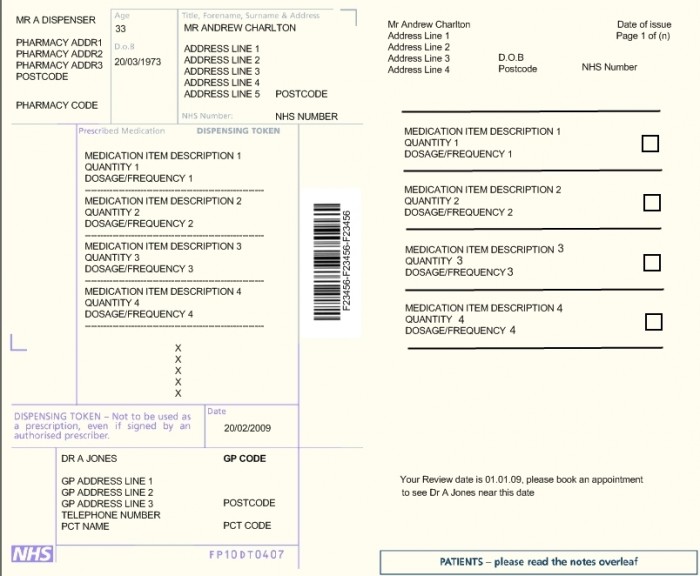
Further info
Read more at:
- EPS token ordering and escalation factsheet
- Summary of EPS-related forms and tokens
- Factsheet: Phase 4 token vs Paper prescription comparison factsheet
If you have queries on this webpage or you require more information please contact it@cpe.org.uk.
Return to the Pharmacy IT hub, EPS home or IT a-z index
For more information on this topic please email it@cpe.org.uk

